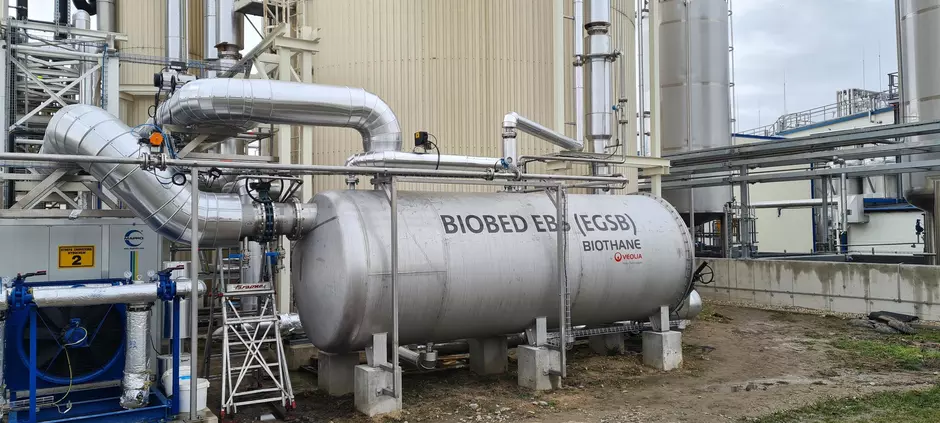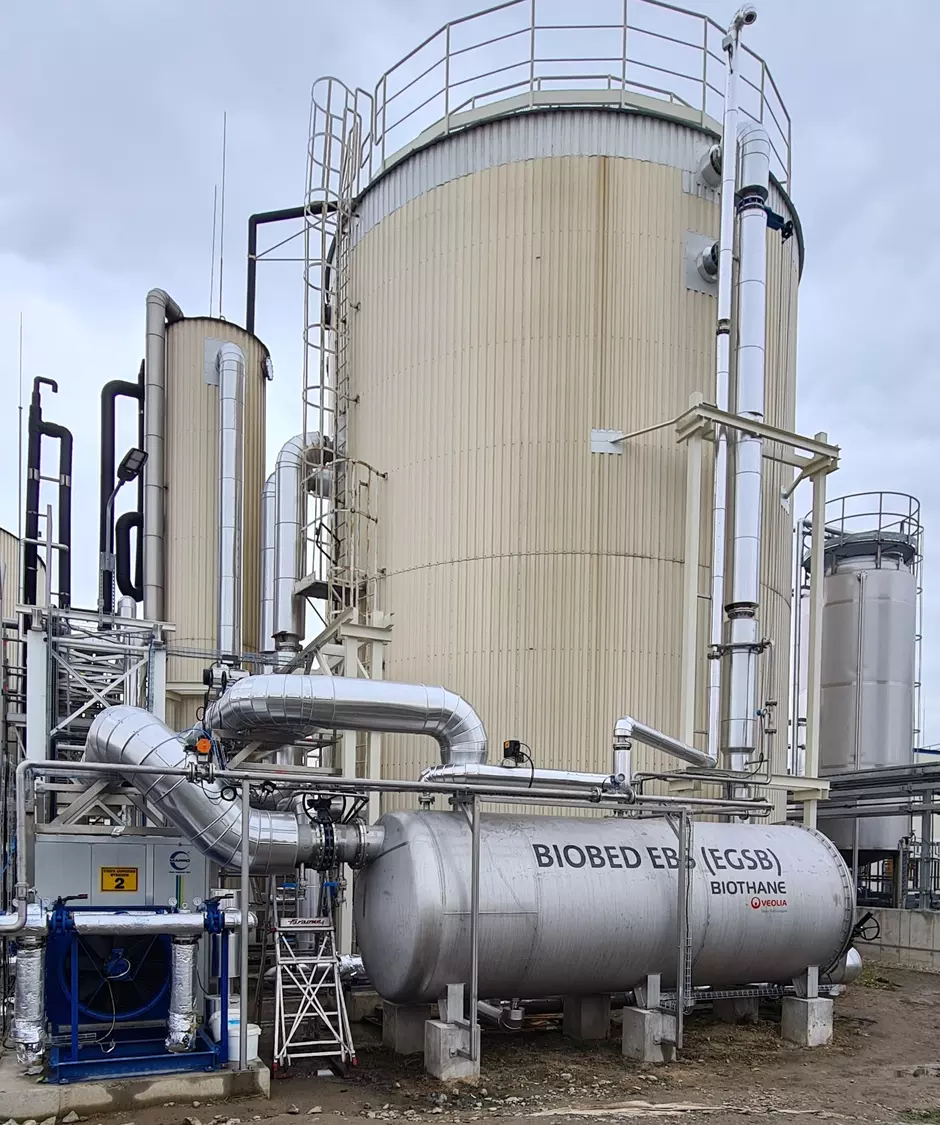Missed Part I of this post? Check it out here.
Life is getting far more challenging for industrial facilities as they address the growing challenges of higher wastewater concentrations. A breakthrough innovation from Biothane, a business unit of Veolia Water Technologies, means operators can now solve scaling issues and avoid downtime, without building a replacement plant.
Upgrading existing assets
The Biobed® EBS solution means all the equipment such as the gas lift and the external separator can be installed and in place while the AD plant continues to run. The reactor is drained and cleaned only to allow the final pipework connections to be made between the separator and the reactor tank and the existing internals removed.
This is a far simpler and quicker process than a conventional approach to revamping a high-rate AD plant and can easily halve the amount of time the plant is shut down - a very significant difference for any industrial plant.

This makes this solution particularly attractive for the retrofit market, especially with thousands of high-rate AD plants in service, with many now reaching the end of their life. Often, the tank is in good condition. However, the Biobed EBS solution makes no demands on the tank and the plant can typically be upgraded into a high-capacity unit that can match the latest generation of AD hybrid systems.
This makes this solution particularly attractive for the retrofit market
Our latest upgrade in Poland
Indeed, the first few deployments of the Biobed EBS system have all been refurbishment projects. This includes a biogas project in Wroclaw, Poland, where mineralization had limited the capacity of the existing anaerobic treatment plant. Owned by one of the world's largest agricultural food companies, the site produces sweeteners, starches, and starch derivatives sourced from wheat. With the wastewater from the glucose and fructose production lines characterized by large variations in organics (COD), nitrogen, phosphorus, and salinity, precipitation and accumulation of inorganic salts meant an upgrade was needed.
Installing a Biobed EBS high-rate anaerobic system would allow a capacity increase of the existing reactor. At the same time, the process would improve the removal efficiency and biogas per day. Meanwhile, the reuse of existing infrastructure made the solution much more cost-effective than the replacement of the entire AD facility.

The process would improve the removal efficiency…the reuse of existing infrastructure made the solution much more cost-effective.
Keeping track of wastewater trends with Biobed EBS
Given the ongoing drive towards greater sustainability and further water use optimisation, the challenge of handling highly concentrated effluents is set to continue.
The importance of water treatment in maintaining overall plant operations makes the reliability of water treatment a critical part of the economics of many industries. Owners of high-rate AD plants should take this into account when developing their long-term strategy, especially considering the cost of shutting down a pulp and paper mill for several weeks, for example.
Extensive reuse of existing assets and a smaller footprint also support the broader goal of sustainability through the life extension of older but still largely serviceable facilities. Indeed, the external separator solution is often the only commercial alternative to installing a completely new system.
By enabling on-site cleaning in place, Biothane’s Biobed EBS brings a new dimension to the market by allowing continuous treatment of wastewater even where there is a high scaling and precipitation potential.
In wastewater, there is never one single solution, but the Biobed EBS brings another option to the wastewater treatment toolbox.
Author: Atlantean Media






